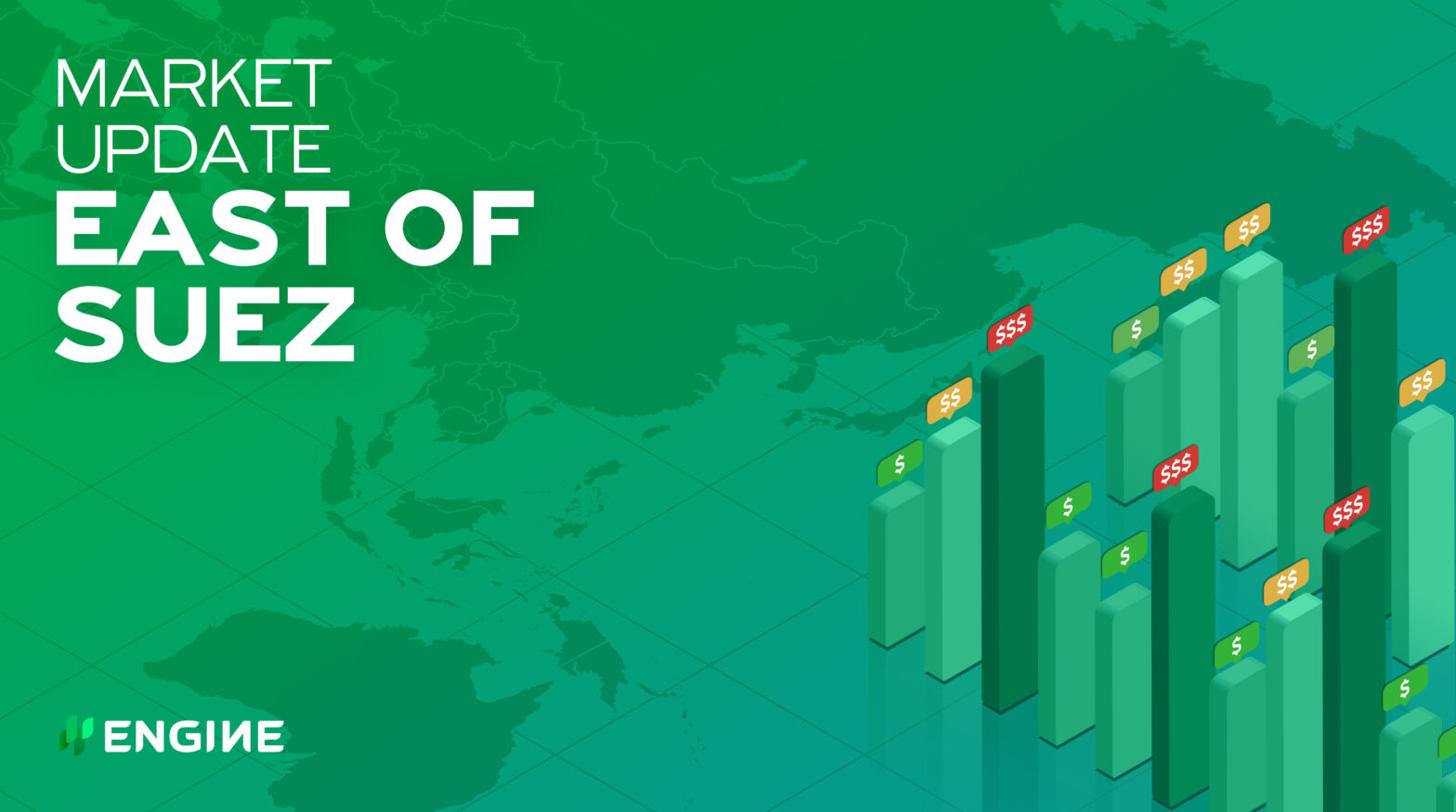East of Suez bunker prices have come down with Brent crude on the day, and bunkering has resumed in Zhoushan and Yellow Sea ports in China.
Changes on the day to 16.00 SGT (08.00 GMT) today:
- VLSFO prices down in Fujairah ($20/mt), Zhoushan ($12/mt) and Singapore ($10/mt)
- LSMGO prices down in Fujairah ($24/mt), Singapore ($16/mt) and Zhoushan ($13/mt)
- HSFO380 prices down in Fujairah ($19/mt) and Singapore ($6/mt)
Bunkering resumed in Zhoushan earlier today after operations were suspended last Friday due to gale force winds. Owing to a backlog, bunker fuel availability remains tight in the port, particularly so for LSMGO. Only one supplier can offer HSFO380 in the Chinese port, according to a source.
Meanwhile, bunkering is expected to remain suspended in several South Korean ports until 13 November as bad weather lingers in the region.
Hong Kong’s VLSFO and LSMGO availability remains normal with lead times of up to four days, while HSFO380 supply is moderate without any recent supply shortages. Bunker demand remains healthy in the port, with some suppliers fully booked and barges getting tight due to a higher number of stems, according to sources.
Lead times for VLSFO in Singapore are shorter by one day now, standing at 11 days, compared to a recommended nine-day lead time for the grade in Fujairah.
Brent
Front-month ICE Brent has slumped $2.26/bbl lower on the day and more than erased the previous session’s gains. At 16.00 SGT (08.00 GMT) it stood at $82.75/bbl.
Brent is down under pressure from rising US crude inventories. Commercial crude stocks rose by 1 million bbls to a three-month high of 435.10 million bbls on 5 November, official Energy Information Administration (EIA) figures showed yesterday.
Stocks grew despite higher refinery utilisation, and largely as a result of a 3.15 million-bbl release from its Strategic Petroleum Reserves (SPR). These reserves are usually tapped to feed the commercial market during emergency production outages, like after Hurricane Ida earlier this year.
The Biden administration had warned it would resort to “tools” to cool the recent oil price rally and make fuels more affordable to consumers. Major oil consuming countries like the US, Japan and India had been increasingly vocal towards OPEC+, urging the group to pump more in the lead-up to its monthly meeting last week.
The White House has yet to announce a large release from its SPR to ease price pressure, but the possibility of it happening has contributed to put a lid on prices.
“It seems unlikely crude prices can break above recent highs until energy traders see whatever action will come from the Biden administration,” OANDA analyst Edward Moya said.
